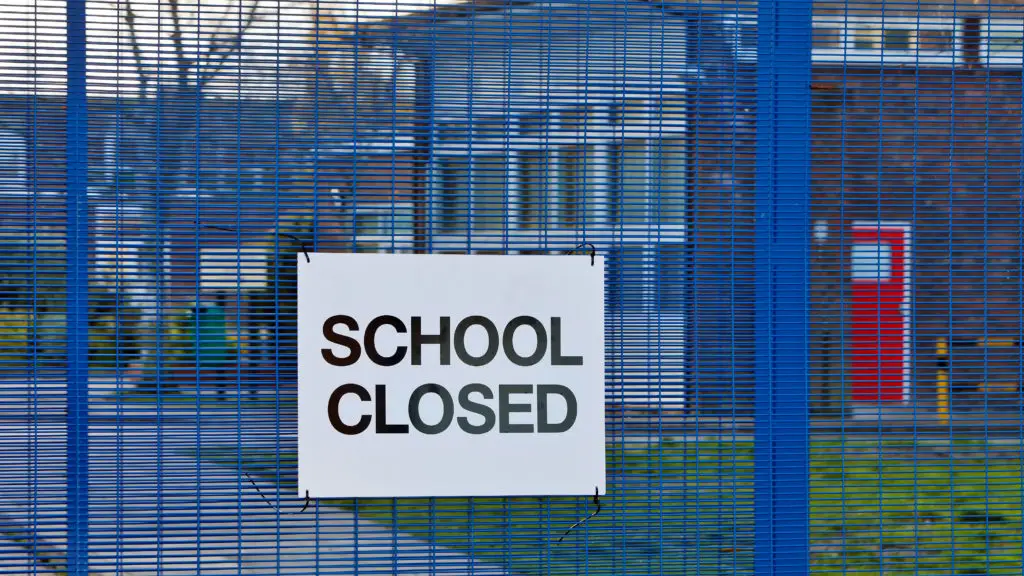With school buildings across the country shut down for an unknown period of time, educating students necessarily means massive changes in how educators deliver instruction and how school and system leaders support these efforts.
It won’t be “business as usual” when schools finally reopen. Could teacher labor agreements create barriers to necessary changes, such as blended learning models where students attend school only a few hours each week to preserve social distancing and then work online, or plans where some teachers lead online courses for hundreds of students and others work with students one-on-one, or schedules for year-round part-time schooling?
Since contracts do not specify instructional models, collective bargaining agreements should not present insuperable barriers to most of the sweeping changes districts are trying to make—including the shift to remote learning and potential changes to school calendars.
That said, contracts might create some hurdles when it comes to noninstructional demands on teachers’ time. If the shift to remote learning requires more teacher training and more planning time by teachers, districts will need to find agreement with their unions on these expectations. Principals and superintendents who share strong trust with their educators will find willing partners who allow for more flexible interpretation of contracts without grievances. This will surely be all the more true in these extraordinary circumstances.
There are four issues on which unions and districts will need to reach informal agreements to deliver their best efforts in remote learning settings.
Latitude for shifting instruction to virtual delivery.
Shifting instruction from the classroom to the cloud may prompt schools to rethink teacher roles and working conditions.
Virtual instruction can be designed school by school or teacher by teacher. Or it can be centrally designed at the district or school level, with teachers implementing a centralized model. If these models are designed such that they continue to observe the specified boundaries of the school day and limits on the number of course preparations, little stands in the way of making this shift. Instructional approaches and curriculum are within the control of districts.
One benefit of virtual delivery is that a single teacher could deliver direct instruction (e.g., lectures, explaining any projects or assignments) to dozens or hundreds of students. Doing so would allow other teachers to support students with check-ins, small-group meetings, or personalized follow-up with families—tasks that might allow teachers juggling their own family obligations to set more flexible work schedules.
This approach would mean a single teacher might be leading a group that exceeds typical class sizes. However, it would not conflict with maximum class size constraints if contracts stipulate an average student-to-teacher ratio across a grade level or a maximum number of students on a teacher’s caseload (as is commonly specified for high school teachers). Unions might also simply waive class size rules for the duration of the crisis.
Flexibility to provide professional development on virtual delivery of instruction.
Contracts may present some real limitations on school districts looking to trade instructional time for additional faculty meetings, professional development, or collaborative time to help teachers go virtual. But importantly, school districts should at least use the time the contract dedicates for these activities to help train teachers for online instruction.
The professional development requirements for teachers switching to virtual instruction, and for preparing for students’ eventual return are clearly significant. Preparation for the shift to online learning may require time set aside for teacher collaborative planning, faculty meetings, and dedicated training for online learning. The typical public school labor agreement, however, specifies exactly how much time teachers can be asked to engage in these activities and may even specify conditions such as whether they are voluntary or who is allowed to decide their content.
Use of teachers’ instructional time if teachers aren’t instructing.
For the most part, time held for instruction is defined as the teacher’s contracted day minus time dedicated to planning and prep, collaborative planning, professional development, or faculty meetings. Districts do not have free rein to redeploy teachers to other activities during this time. Districts can require that instruction be done in a specific way, but they likely cannot decide to capture this time to increase professional development or training without some agreement with their union. In other words, labor agreements might have to change to accommodate a new reality in which many teachers may spend a significant amount of their work hours doing things other than providing instruction.
Working collaboratively with their labor partners, school districts might redefine expectations for teachers when the only mode for instructional delivery is online. This involves creating new memorandums of understanding or temporary agreements that supersede existing contract language and provide additional guidance on how teachers should be spending their time. These agreements might outline how much time teachers should spend on synchronous instruction, other forms of instruction/support (including large- and small-group tutoring) and assignment/content creation. When strong relationships exist with labor groups this can be done fairly quickly to address current circumstances.
Flexibility in the school calendar.
States generally set key parameters of school calendars: the minimum number of days in the school year or earliest start date. In some cases, districts and unions agree to go above the state’s minimum number of instructional days. Exactly when those instructional days happen, however, is often not within the scope of bargaining negotiations. Some districts set calendars in consultation with the union, but still have latitude to modify the calendar.
As happens after hurricanes and snowstorms, districts could attempt to make up part of the lost time by revising their calendars. This flexibility might include bringing students and staff back in the weeks just ahead of the start of the 2020-21 school year, essentially extending the next school year by a couple of weeks.
Contracts obviously matter. Districts will and should consult them as they work through our current and coming challenges. While there may be a few gaps and a few tough constraints in contracts as they exist today, they should not prevent school systems and unions from collaborating to ensure that learning continues amid this pandemic.
Bradley D. Marianno, PhD, is an assistant professor of educational policy and leadership and director of the Center for Research, Evaluation, and Assessment at the University of Nevada, Las Vegas.




